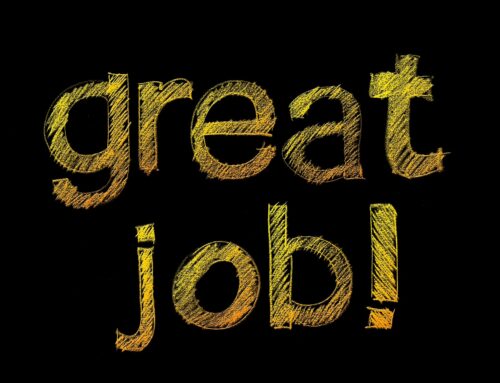
How Personality Assessments Can Help Your Career
I have often said that I didn’t begin to know myself until I was in my 30’s and by then was already a litigator. An unhappy one. I chose to hang on and gut it out, confident that I could overcome my distaste for battle and learn to love litigation. Changing firms only served to cement my sense that I was in the wrong field because no matter how nice the people I worked with were, my feelings about the work did not transform. I marveled at litigators who reveled in the fight and also met many who were struggling like me.
Ultimately, I was able to reinvent myself within the law and find work I enjoyed. There were trade-offs, particularly in the financial compensation department but, by the time I made the switch, I knew I was buying my life back.
One tool that led me out of an unfulfilling career was personality assessments. They told me things about myself I did not know or chose to ignore, thinking I could muscle my way through.
What I learned is that you cannot change your values to suit your career. Instead you must change your career to suit your values if you want to enjoy it.
Personality and Career Choices
How does a person predict with any certainty what type of work they will like? For answers, I interviewed Dr. Robert Hogan, co-founder of Hogan Assessment Systems and an international authority on personality assessment, leadership and organizational effectiveness. Hogan has a Ph.D. from the University of California, Berkeley, where he worked at the Institute for Personality Research, set up by the Carnegie Foundation, to study high level talent and effectiveness. There, he learned how to identify, in quantitative terms, people with a lot of talent for high-level performance in any discipline or field.
I asked Hogan if a personality assessment could help predict a suitable career choice prior to college. He said, “The only assessment you could take out of high school that would be any use at all would be a measure of core values. Core values are really stable from about age 16 to about age 90. That which is going to interest you as a career choice is already there at age 16.”
Take a moment to think back to what interested you at 16. For me it was writing, not becoming a lawyer. Did someone talk you out of what interested you? Did you talk yourself out of it?
Conversely, the bright side and dark side of personality change dramatically over four years in college. According to Hogan, the scores begin to change around the middle of junior year. “This is because they’re used to dealing with other adolescents, who are all crazy. That which will make you popular with adolescents is not what will make you popular in the world of work. In the second half of the junior year in college, kids start realizing that they have to get along with adults and not with other adolescents and you see the scores snap into more of an adult profile.”
We discussed how to make an informed decision about which field or concentration within a field would be a good fit. Hogan paraphrased a favorite quote from Sigmund Freud: “the two most important problems in life are choosing a mate and choosing an occupation and people never do either for rational reasons.”
Hogan highlighted the importance of this insight and called assessment the “antidote” to the career decision dilemma. While romantic relationships are inscrutable and unfathomable, career choices can be significantly more rational using assessments. He says, “It changed my life. The battery of tests I took at Berkeley revealed that I was terribly combative. I didn’t think I was terrible. I thought I was appropriately combative and my combative tendencies have been a major problem in my career and I never realized it. It’s hugely helpful. I had to dial it back.” He accomplished this by thinking ahead in conversations, reflecting on how he was talking to people and paying attention to their feedback while monitoring physical responses.
This is a great example of how assessments can identify blind spots and derailers standing in the way of professional advancement and provide useful insights in your current role. We are not always aware of how we are perceived by others. As Hogan says, “All of us have something that we can work on and improve. All of us annoy other people in our own distinctive ways.”
Hogan describes three aspects of personality:
- The bright side: what you see when people are behaving themselves;
- The dark side: what you see when people let down their guard or stop paying attention to how they’re being perceived, which could be due to stress, or because they are dealing with a subordinate or have lost their temper. “It’s what you see after you’ve married them or they’ve come to work.”
- The inside: your core values. Values determine fit between people and organizations and careers. “I think that’s an enormously important subject to which people don’t pay nearly enough attention.” Hogan said there are many examples of people with plenty of talent who can make it in a profession, but are a bad fit with the actual requirements.
“The Hogan” is a five-factor personality assessment that measures the bright side, dark side and inside in five facets. Hogan said that in every language and culture in the world, we think about other people in terms of these five broad dimensions:
- Neuroticism (emotional stability): reactive and vulnerable to stress at the low end of the scale and confident, calm, and emotionally stable at the high end;
- Extroversion: outgoing and socially bold at the high end of the scale and retiring and introverted at the low end;
- Conscientiousness: “for people at the high end, it’s, ‘show me a rule and I’ll follow it’ and for people at the low end it’s, ‘show me a rule and I’ll break it.'”
- Agreeableness: “people at the high end are very charming, convivial, gracious, thoughtful and genuinely sweet and people at the low end are blunt, brusque and in your face.”
- Openness to experience: “people at the low end are intellectually content, not curious; and people at the high end are curious and open-minded and want to know how the world works.”
Hogan commented on my career path: “If you’re currently working as a coach and writer, that’s a long way from law. Those are not compatible career activities. I don’t think you were real comfortable as a lawyer unless you were doing something interesting like helping battered women.” While that’s not exactly where I found my niche, he was on the right track. When I moved from private practice civil litigation to working in-house at school districts, I found satisfaction in my work as a lawyer for the first time. I was 39 years old, have reinvented myself several times since then, and now help others do the same as a coach.
A Chinese proverb says, “the best time to plant a tree was 20 years ago. The second best time is now.” The same is true for your career. The best time to choose well is at the start. The second best time is now. Before you jump, consider an assessment in order to have data to help match your personality, values and preferences against positions you are considering.
Reprinted with permission from the February 22, 2017 edition of “The Legal Intelligencer” © 2017 ALM Media Properties, LLC. All rights reserved. Further duplication without permission is prohibited. For information, contact 877-257-3382, reprints@alm.com or visit www.almreprints.com.





